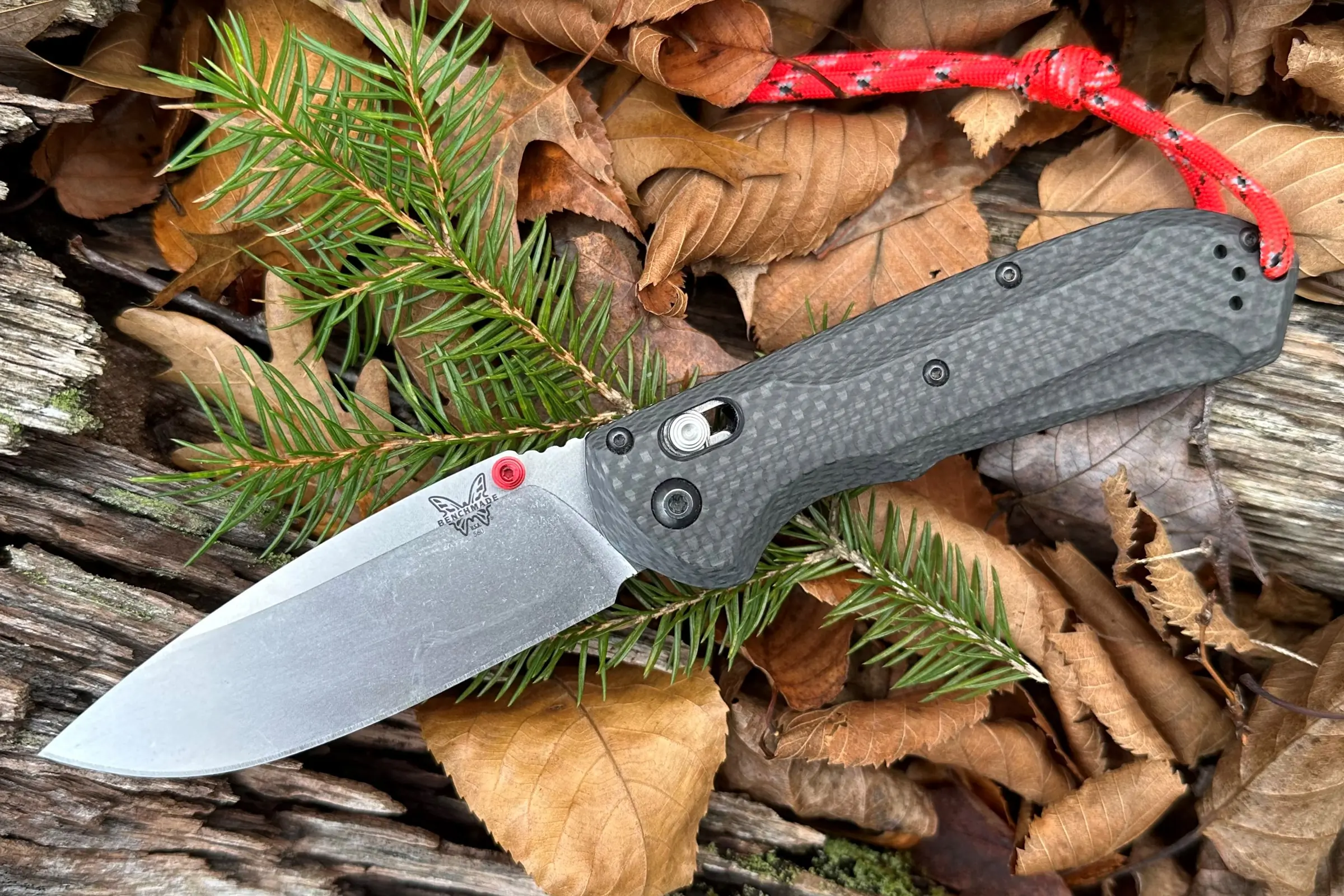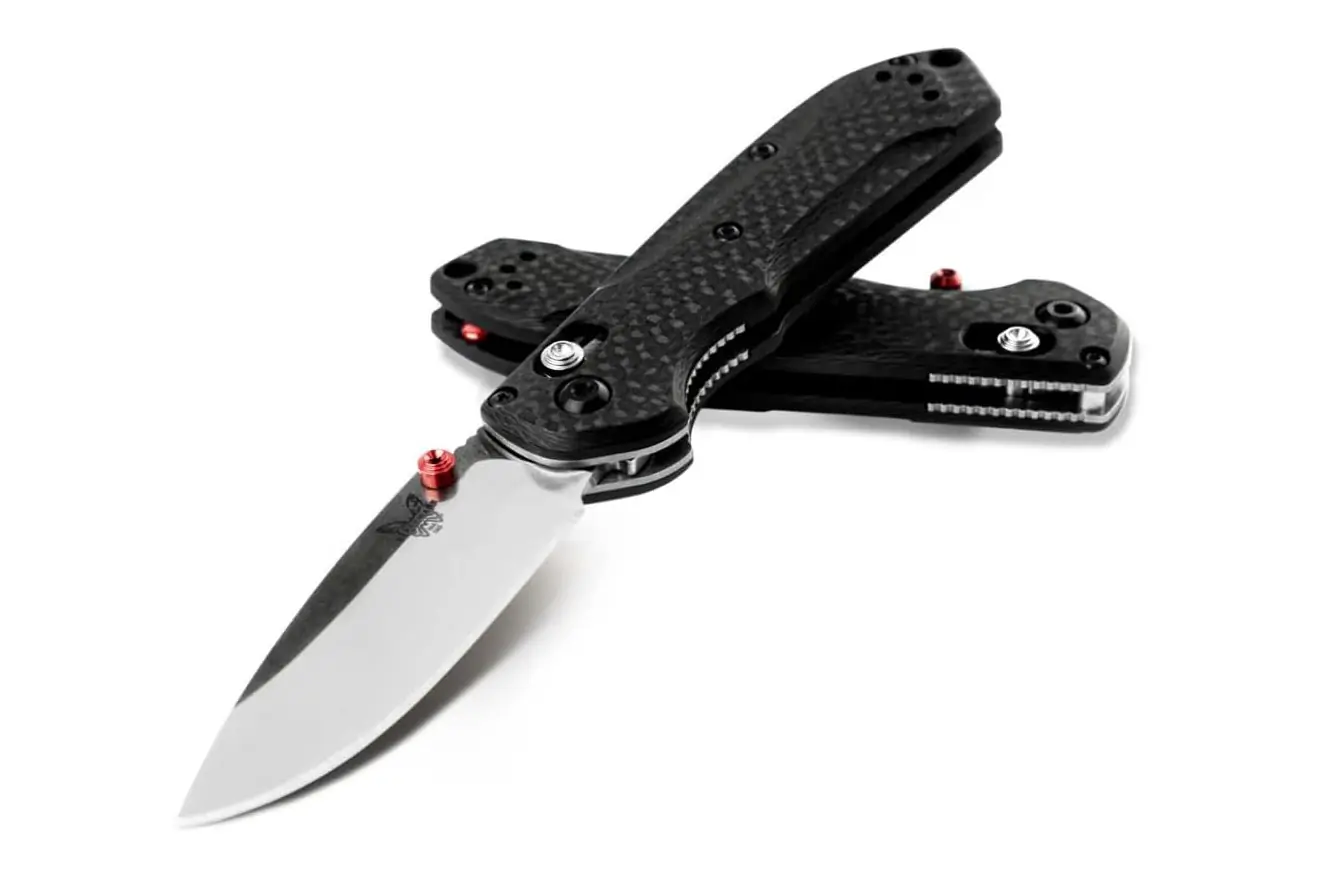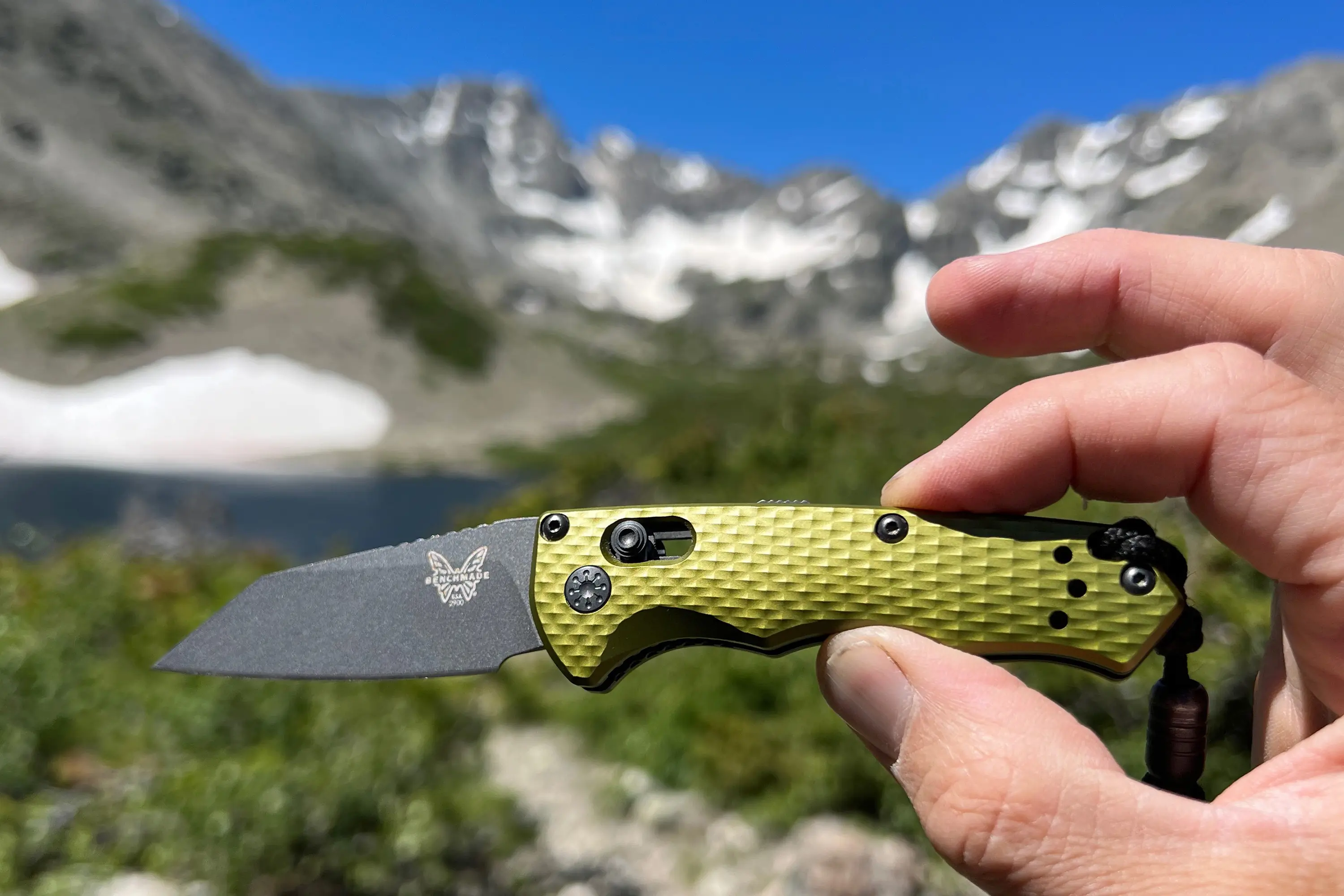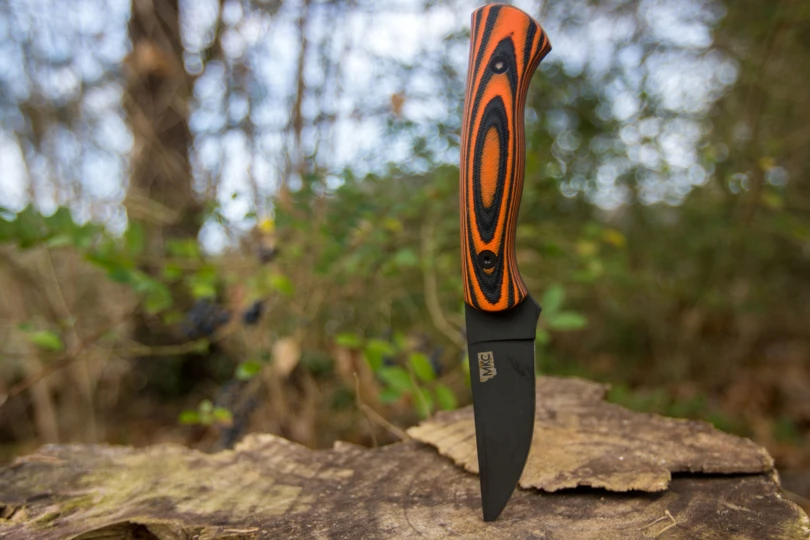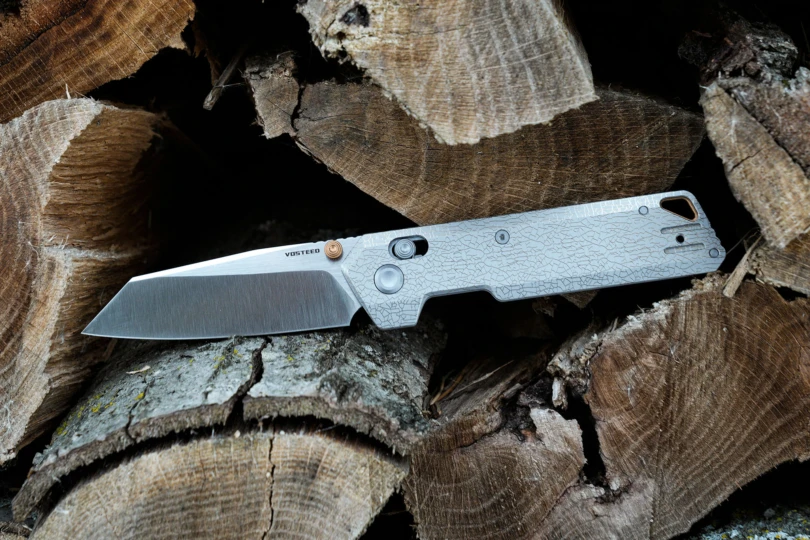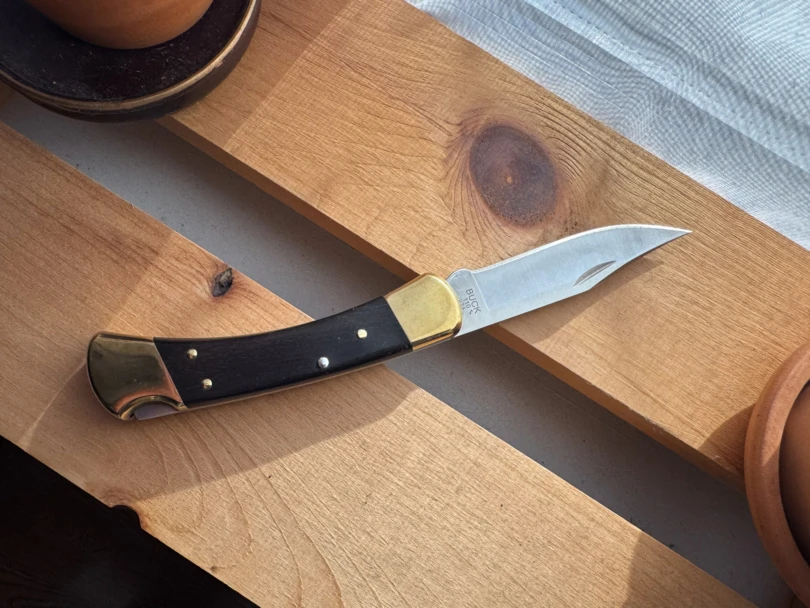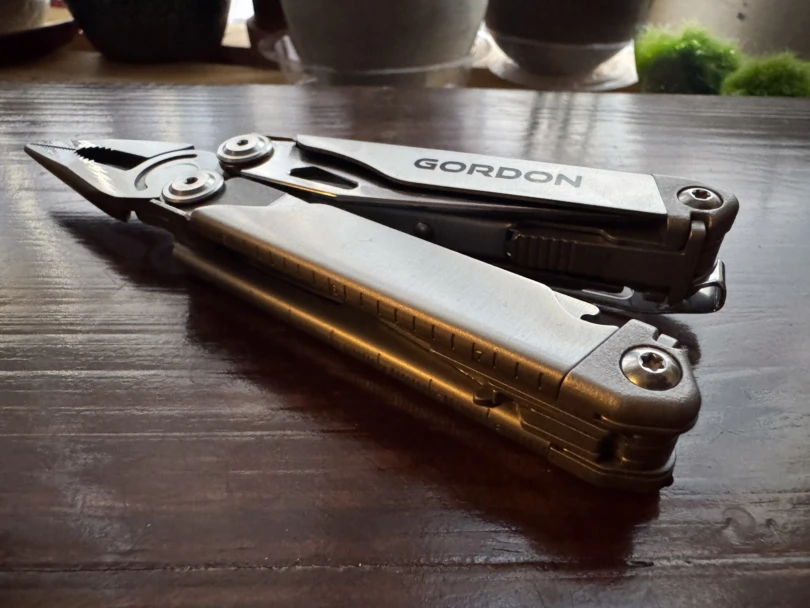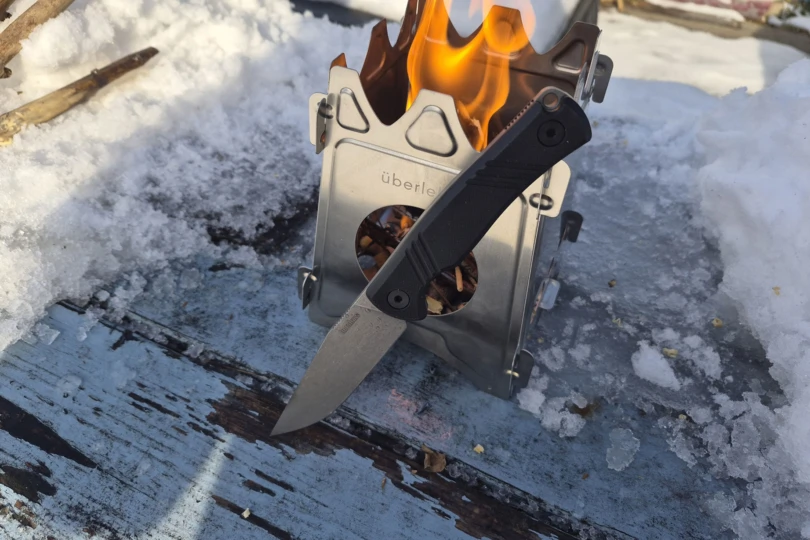A lot of folks who enjoy the outdoors tend to steer clear of full-size folding knives. For the life of me, I have no idea why. Sure, I understand the reasoning behind keeping things light — help users move through the trails smoothly, like a caffeinated gazelle.
However, if you’re counting ounces on the essentials, you’re playing with fire and could put yourself in a dangerous situation — assuming you’re not bringing a hatchet or belt knife. And I say it because I want all of you to be safe out there.
So, with my heart in my hand, please consider this full-size, premium pocket knife beast for your next outdoor adventure: Benchmade’s Freek (560-03).
Inspired by the success of the 565-1 Mini Freek, the Freek carries over advanced ergonomics, satin-finished, a drop-point S90V blade, and carbon fiber scales. It’s roughly 1.25 inches longer; stretching the handle out ¾ inches, and the blade another half-inch.
Without further ado, I present to you 2 months of using the Benchmade Freek as my primary edged tool for my EDC, in addition to my adventures in the woods, water, and wandering around in the dark on mountains under the stars.
In short: Benchmade’s Freek is built to be the one knife you can rely on when you head out on an adventure. Its premium materials, build, and advanced ergonomics offer the perfect blend of features and functions. And thus, it allows you to do damn near anything you want with it.
- OAL: 8.46”
- Blade length: 3.6”
- Blade steel: S90V (Stainless)
- Blade shape: Drop point
- Grind: Flat
- Hardness: 69-61 HRC
- Lock type: Axis (Crossbar-Style)
- Carry: Right or left hand, tip-up
- Weight: 4.12 oz.
- Price: $350
Pros
- S90V blade steel
- That Doug Ritter RST blade ramp
- Axis Lock. Always the Axis Lock
Cons
- I would like to see a Micarta version
- The factory pocket clip is under-sized for the application
Benchmade Freek 560-03: Review
Over the summer, I had the pleasure of doing a head-to-head test on Benchmade’s two current Mini Freek models. This pitted S90V against M4. Stainless steel against tool steel. As a major fan and user of D2 steel, I love all tool steels. However, when it was time to get down to brass tacks, the Stainless S90V edged ahead of the M4 variant. So, it was a no-brainer for me to take on the Freek for a long-term test.
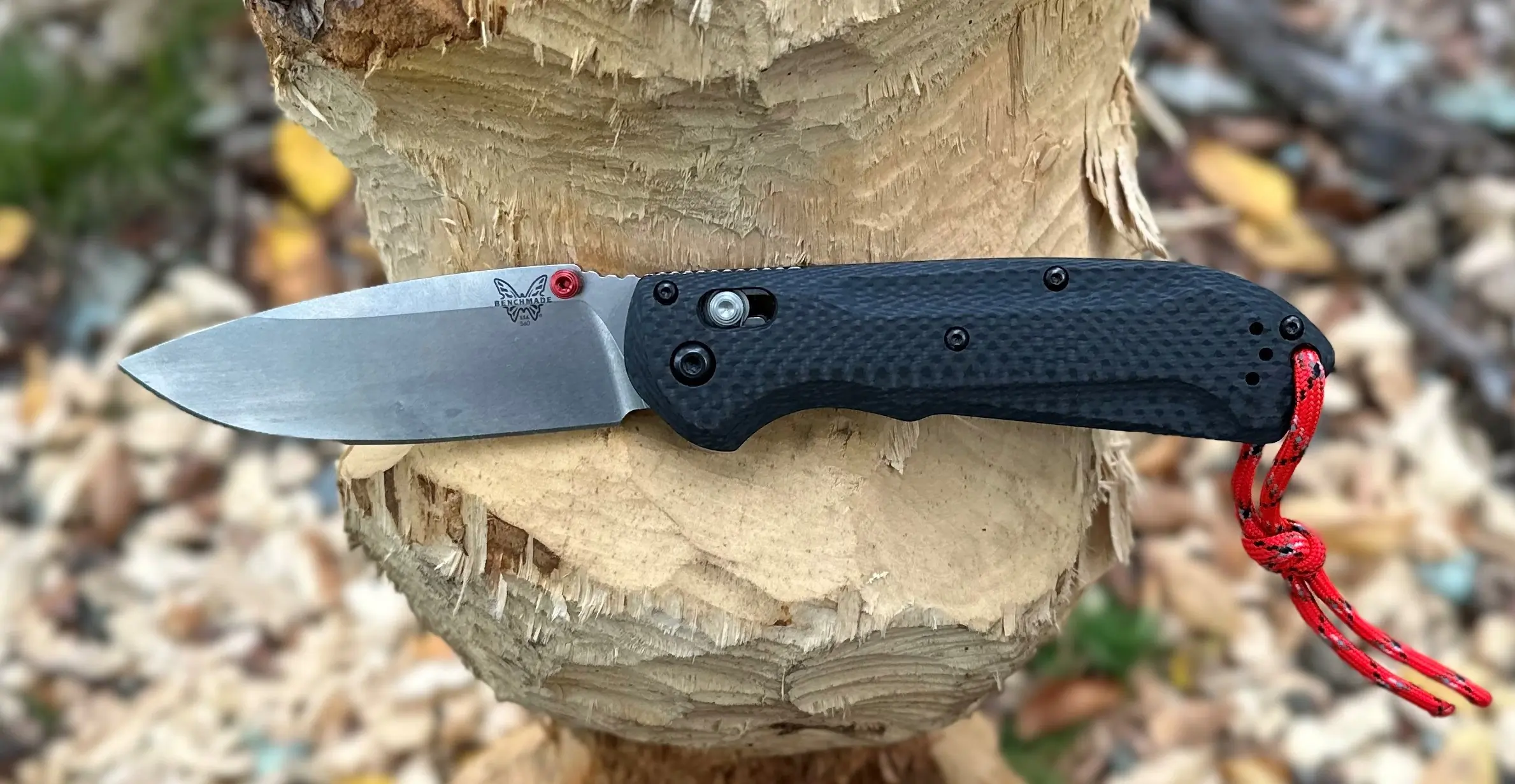
Design and Features
But the one carried-over feature I love is the ramping up of the back of the blade between the pivot and thumb stud. Not only does this increase your ability to complete more demanding tasks, but it’s also a callback to a historically significant knife designed for life in the woods, the RSK-1.
The Benchmade Freek has a 3.6-inch, satin-finished, drop-point S90V blade. An ultra-premium stainless blade steel, S90V excels in abrasion and corrosion resistance. It can also hold an edge for an impressive amount of time, which is a blessing in disguise, since S90V is a bear to sharpen.
As someone who usually goes for G-10 or Micarta, it’s hard to ignore the benefits of the carbon fiber scales on the Freek. With a closed length of 4.86 inches, any other material would have added more weight to this behemoth. Plus, carbon fiber also plays well with the black hardware, and red thumb stud and stand-offs supporting the blade cavity.
The Freek comes with Benchmade’s Split Arrow pocket clip. This allows for deep carry and is found on quite a few Benchmade models. However, it’s not a part you can buy directly from Benchmade, and I’ve never been a fan of it. So, I hijacked the Standard 3-hole Pocket Clip off of my AFO II. It’s beefier and plays the role more substantially, in my expert opinion.
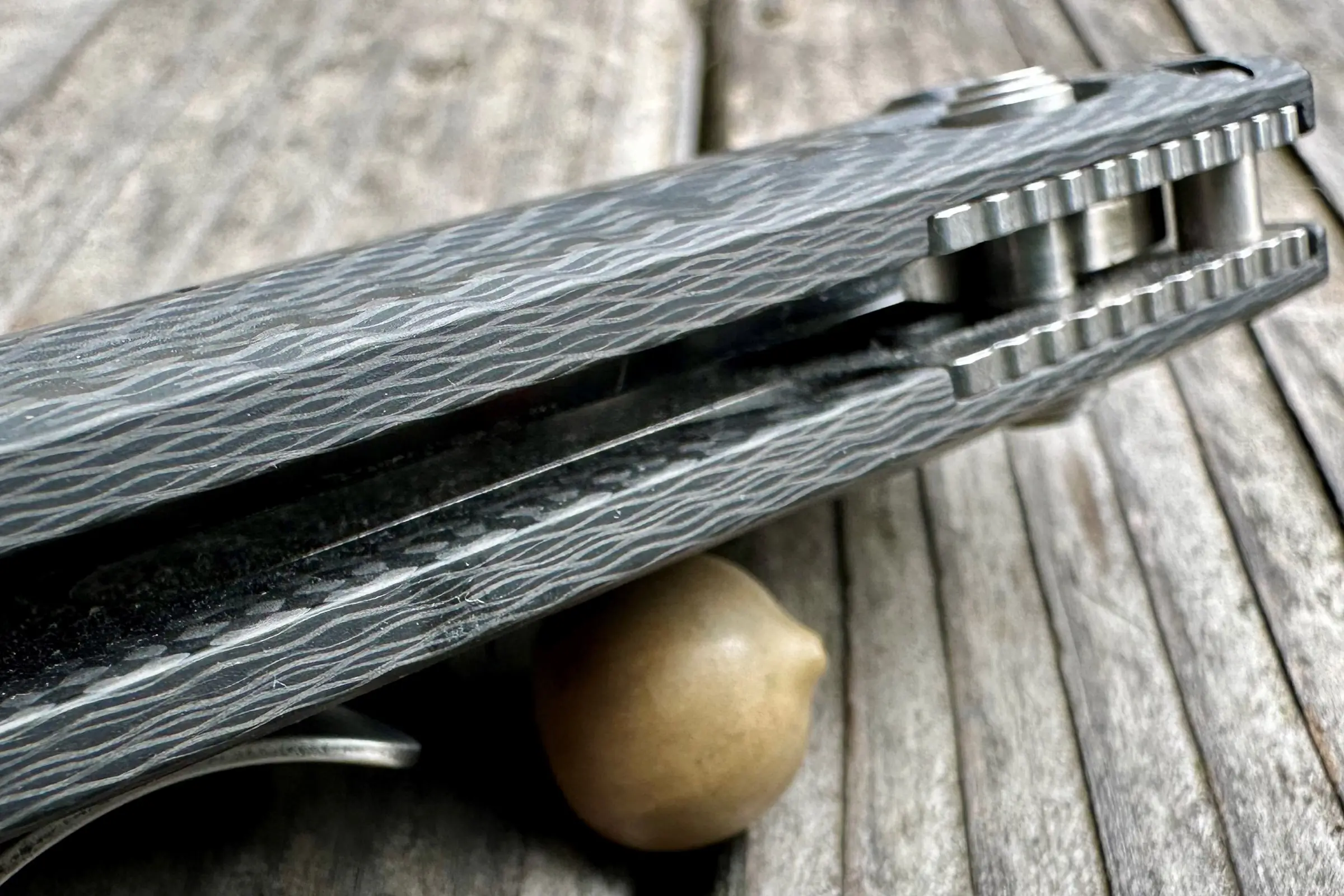



The advanced ergonomics on the Freek can be found in the tapering and chamfering of the edges of the handle scales. It is also present in the oversized choil and jimping on the stainless steel pivot support.
But the one carried-over feature from the Mini-Freek that I love is the ramping up of the back of the blade, between the pivot and thumb stud. Not only does this increase your ability to complete more demanding tasks, but it’s a callback to a historically significant knife designed for life in the woods — Doug Ritter’s first knife with Benchmade, the RSK-1.
Father of Freek: Doug Ritter
Doug Ritter is just as important to the knife world as he is to the survival world. For more than 30 years, not only has he been one of the few authorities on survival techniques, but he also created tools to help folks survive in dire situations. If that’s not impressive enough, Ritter founded Knife Rights, which is an organization that’s helping to rewrite the knife laws in the United States.
I first became aware of Ritter and his impact on the outdoor world when I was given one of his RSK Mk5 knives as a Christmas gift. The knife was designed to fit in an Altoid-sized tin (in which it was packaged) or around your neck. The knife was only around 4 inches long, half of which was the blade. This meant there wasn’t a lot of room for a significant amount of grip. But the back of the knife ramped up, allowing your hand to move forward and give you increased grip.
I could easily make fir sticks, prep small kindling for a fire, and process small game with the RSK Mk5. Around my neck, it could also come in handy in a jam (thankfully, I was never confronted).
That said, for there to be an Mk5, there needs to be an Mk1, and that knife was made in 2004. Considered an evolution of the Benchmade Griptilian, the Ritter Survival Knife received high praise. Benchmade’s late founder, Les de Asis, called it a “no-nonsense tool enduring the highest degree of survivability while in harm’s way.”
The knife was a success and, though no longer made by Benchmade, Ritter has since worked with Hogue knives to keep the RSK line alive and kicking. But what really set the RSK knife apart from the rest was the ramping up of the blade, between the pivot and thumb stud.
It’s the same feature that sets the Freek line apart from the rest. It allows you to really bear down on the knife and put it to work.
Benchmade Freek: First Impressions
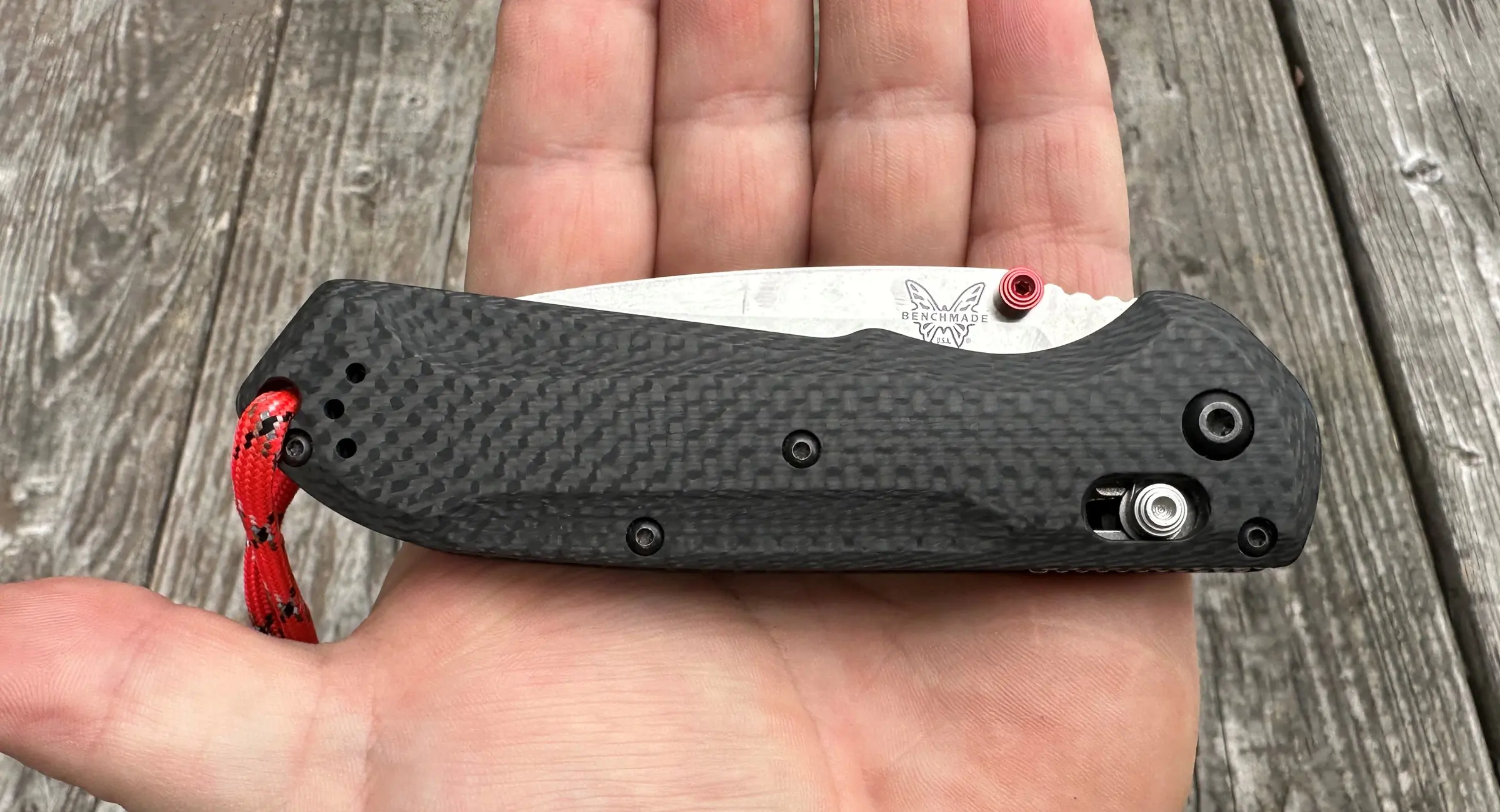



Benchmade claims the Freek is built for “bigger hands and bigger tasks.” The incredible ergonomics of the Freek allow for all paw sizes to benefit from using it; it just fills your hand. In fact, it overlaps my hand, but that’s what nearly 5 inches of a closed knife will do.
All in all, I feel that the Freek is lighter than what it should be for its size. It should be a paperweight at this size, but instead, I find it’s just the right weight for the size of the knife (if not a little lighter than it could be).
I was accustomed to the size of the Mini-Freek, to the point where I preferred it when the Freek arrived. The full-size Freek took up more room in my pocket and more room in my hand. But it’s not unruly to wield and I quickly adjusted to it. Then I quickly started to see just how much abuse this knife could take.
Not to skip ahead, but I’m still trying to defeat this knife, 2 months into my life with it. I am happily failing.
In the Field
Out in the world, the Freek is a real joy to carry around. As my EDC, I use it daily to do almost anything for which I would need a knife, and some things I wouldn’t.
For example, while swapping out the headlight bulb on a friend’s Subaru Forester this weekend, I dropped the plastic cap that holds the bulb in place and it fell onto the battery tray. There was no way my arm was getting down there, so I used the Freek to pin the cap to the side of the battery and drag it up to where I could reach it.
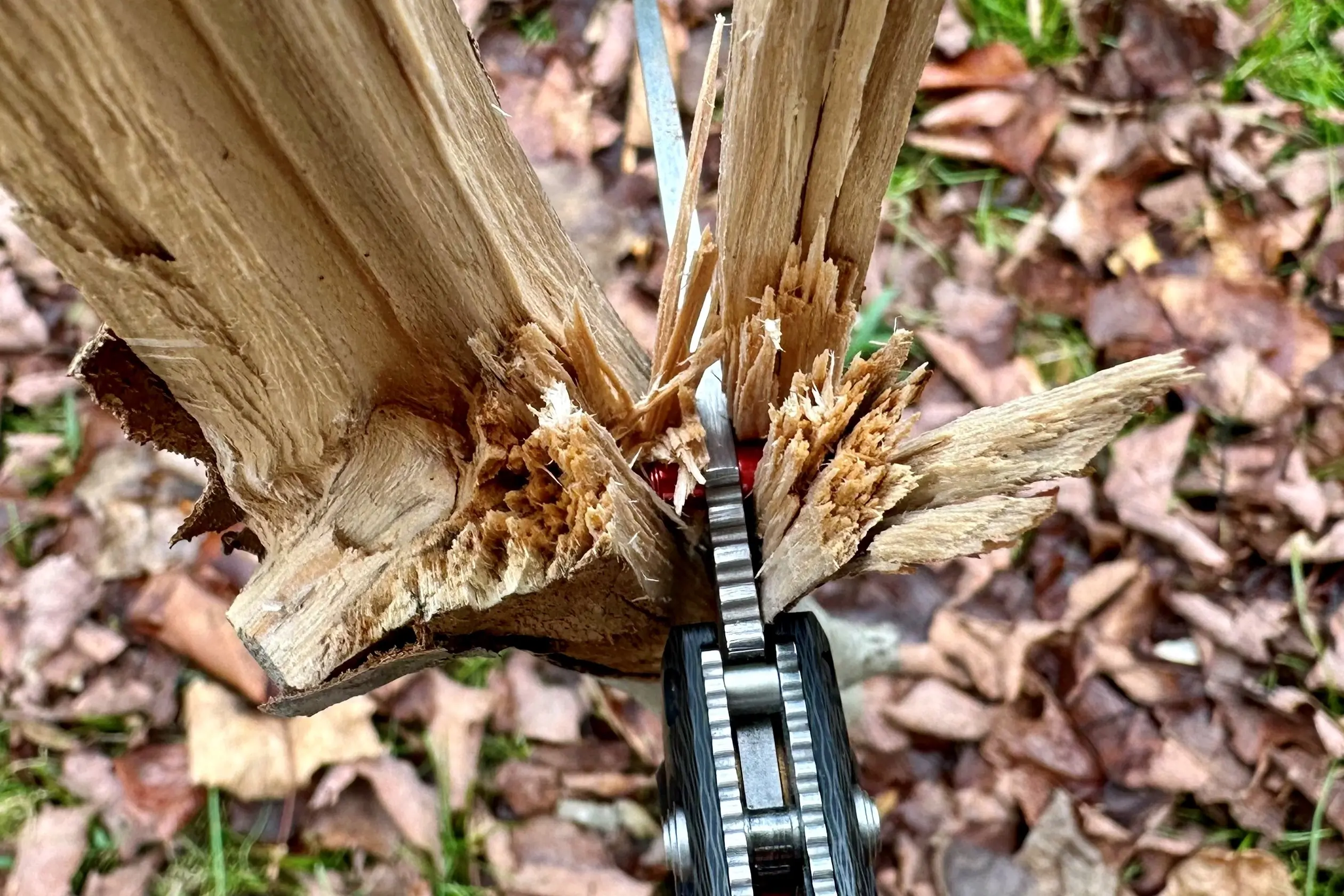



As my go-to knife in the woods, the Freek tackled food prep, a little digging, and even some hearty batoning to make larger kindling. I wouldn’t recommend batoning with many knives, but anything that has an Axis lock or crossbar-style lock will get the job done. Just don’t expect to be able to use Benchmade’s Lifetime Warranty if the brand catches you using its folding knife for such a barbaric act.
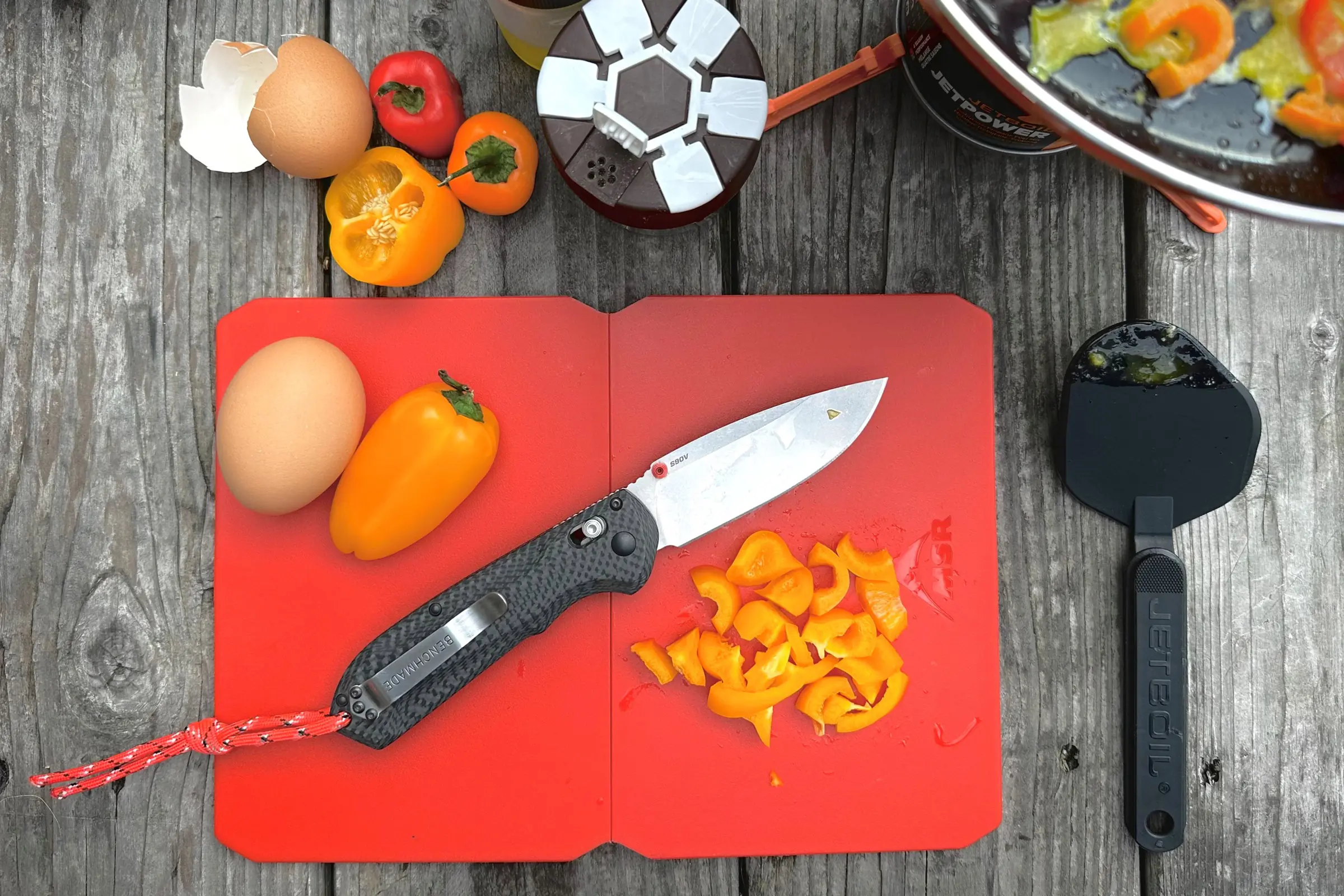



Ultralight backpacking folks will likely knock the Freek as too big and bulky. Are they wrong? It kind of depends whom you ask. For me, a knife like the Freek gives ultralight devouts the ability to rely on a single-edged tool without having to stuff another in their pack. In my opinion, this would be the epitome of minimalism.
‘Lifesharp’: Benchmade Sharpening Service
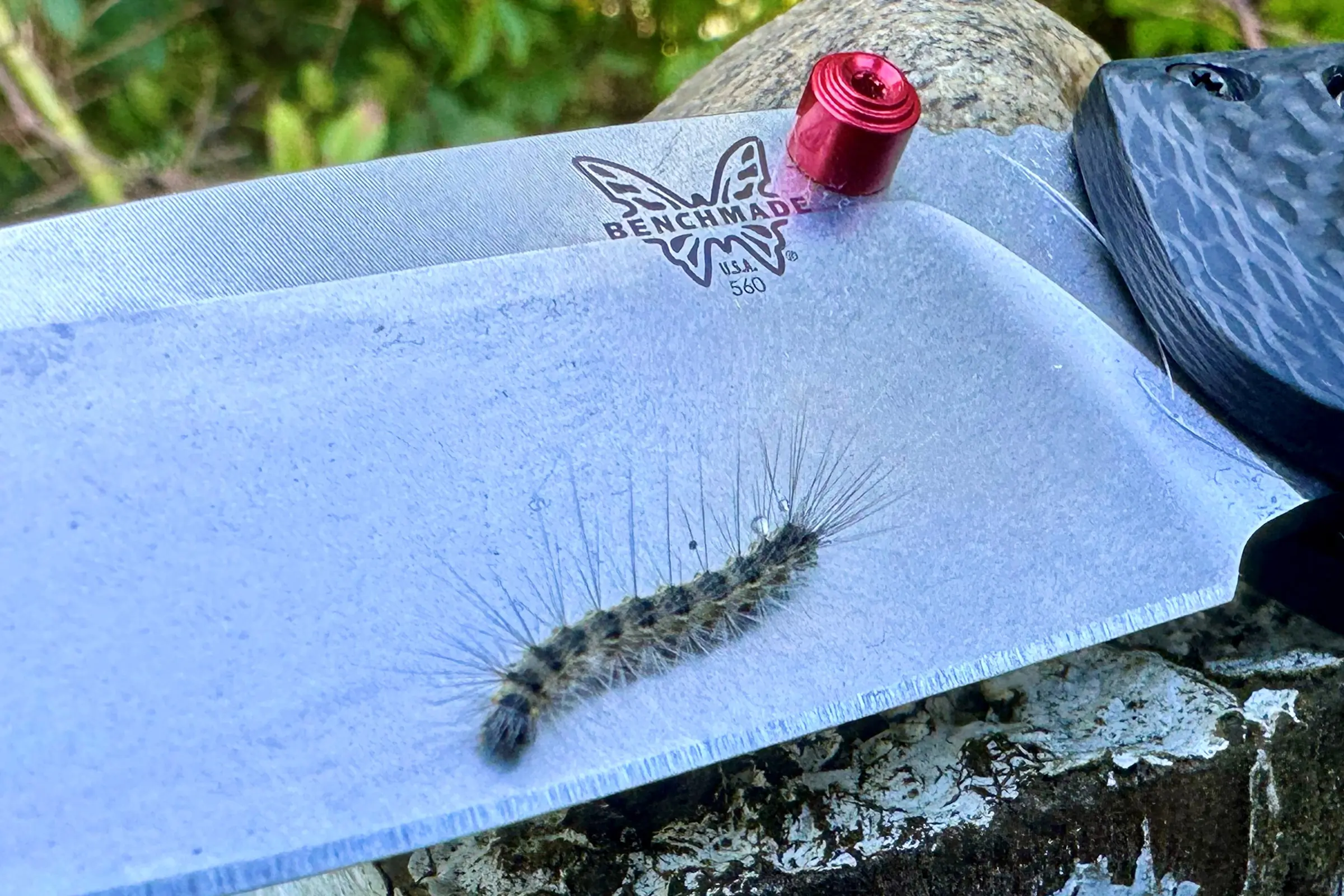



I mentioned how S90V is a real bear to sharpen. Rather than letting it be your beast of burden, Benchmade stepped up to offer free sharpening for all of its knives.
Unless you’re really comfortable with sharpening, have the right tools, and know what you’re doing, I would recommend sending anything with ultra-premium blade steel, like S90V, to Benchmade and take the brand up on its Lifesharp offer.
That said, I’ve sliced everything you could slice with a knife at least twice with the Freek. Just yesterday I precision sliced a paper-thin piece of skin off my finger. This is serious steel — big league stuff. You’re not going to need to send a knife like this in for a while for anything.
Benchmade Freek 560-03: In Conclusion
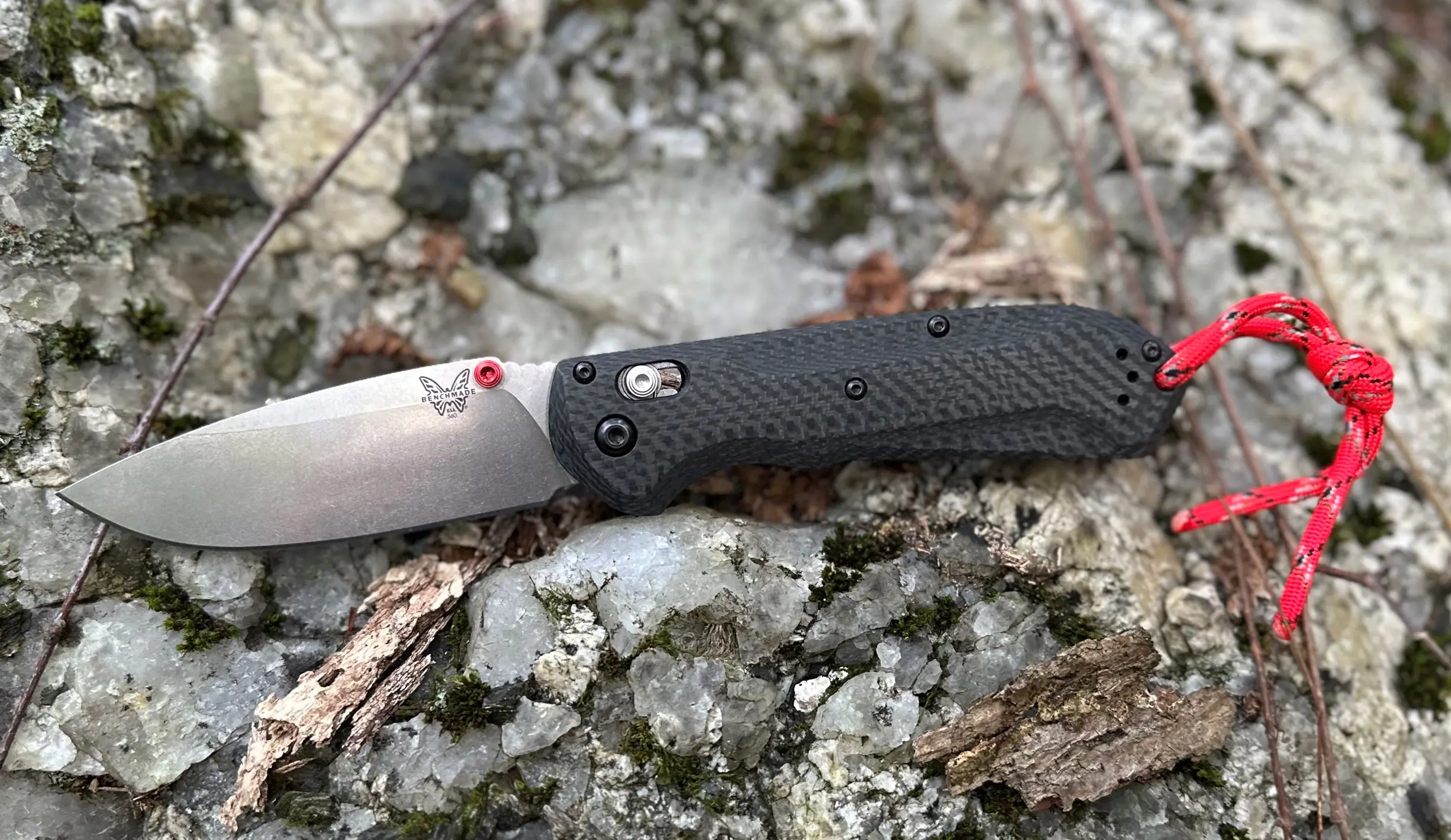



I don’t drink too much these days, but I used to joke with people that if you’re going to only be drinking a few, make sure they’re the best few you can find. That same logic transfers over to all of the gear I carry and tools I use.
The Benchmade Freek is a big, bright, shining example of that ethos. If you’re concerned about weight, bringing a knife like the Freek will help you keep the weight down by being the only knife you need. I don’t always think a larger knife is the best choice, but with a knife like the Freek (read: ultra-premium materials and advanced ergonomics), it just is.
I took on some seriously demanding work with this knife and can confidently say that you could spend a week in the woods with just this knife as your one tool, and do everything you could with a belt knife and maybe even a hatchet.
You probably won’t build a cabin with it, but you could easily build a shelter with it. It just depends on how determined you are. This knife will exceed your expectations and is well worth the extra ounce or two.
